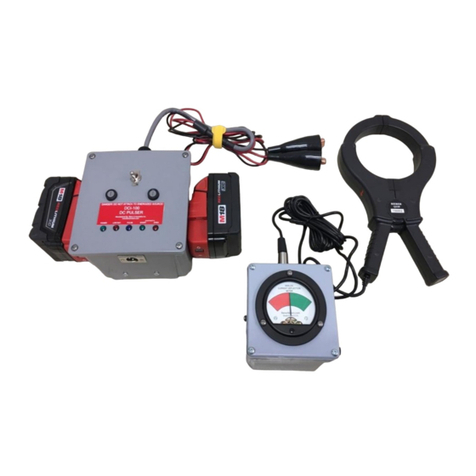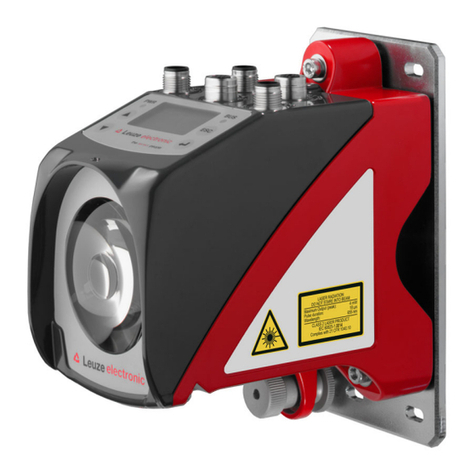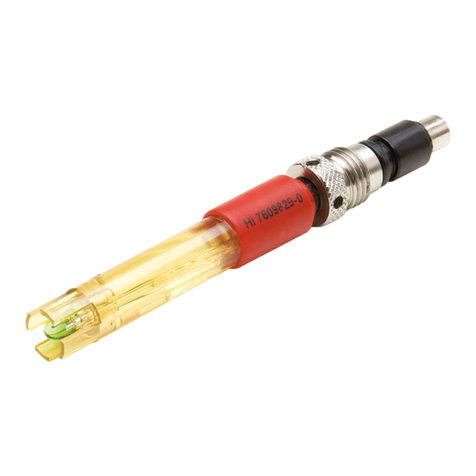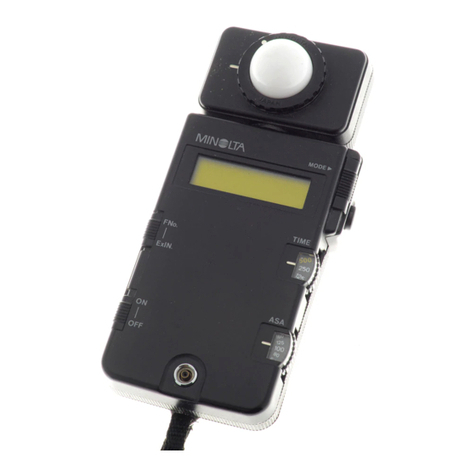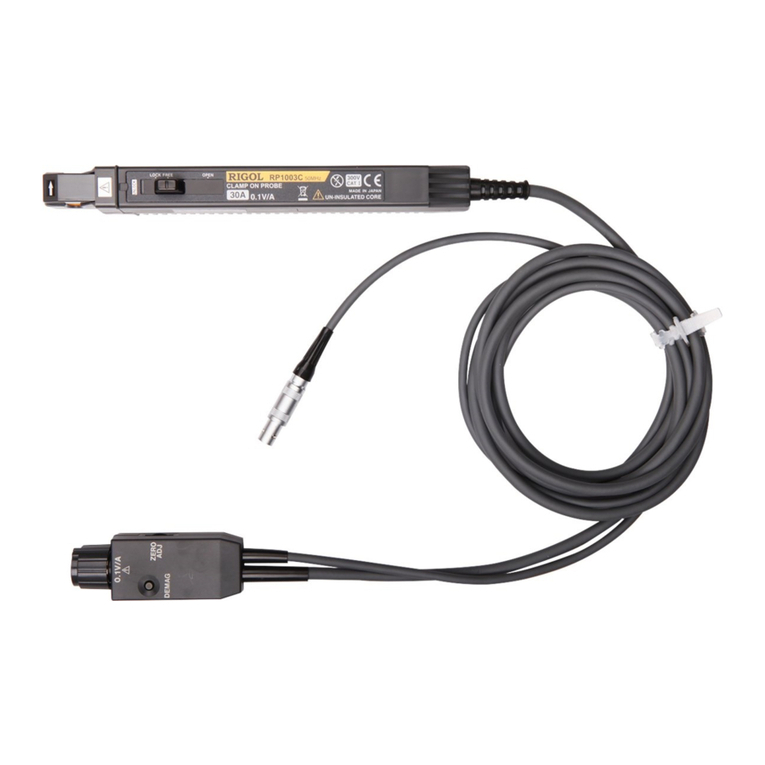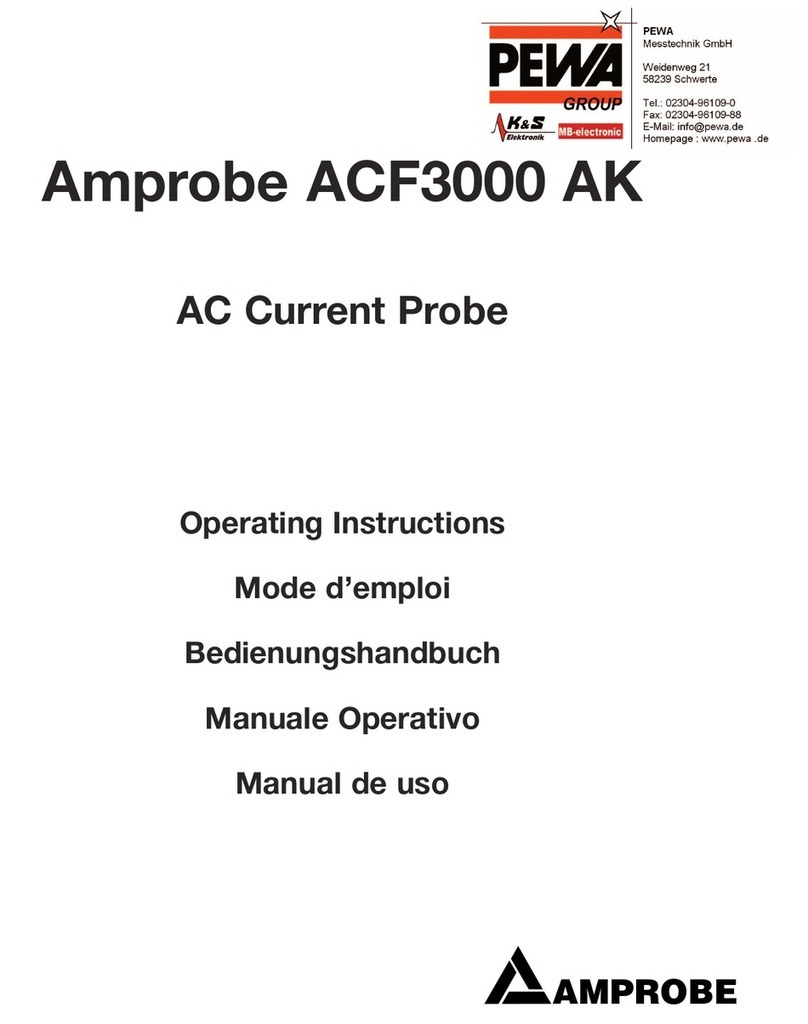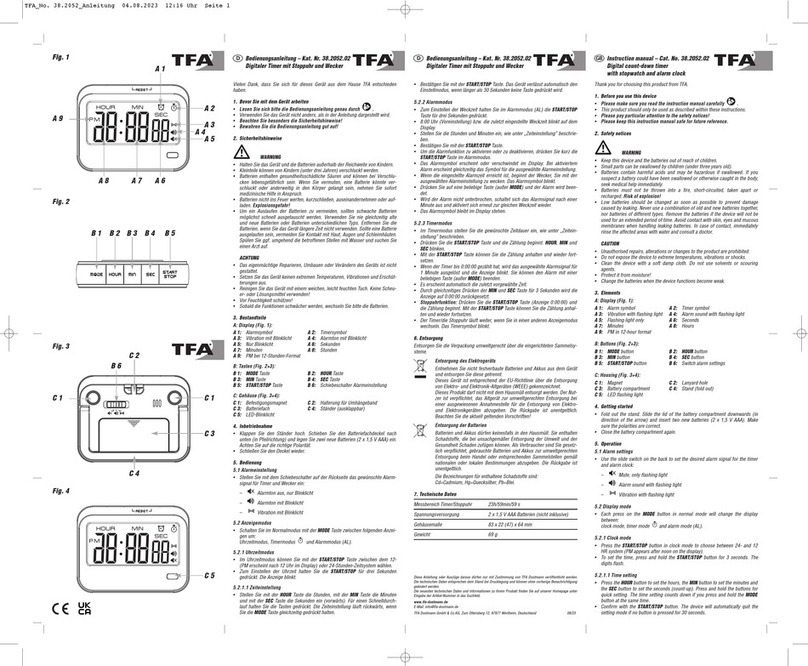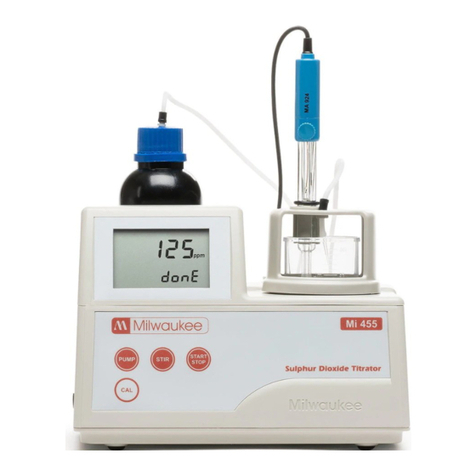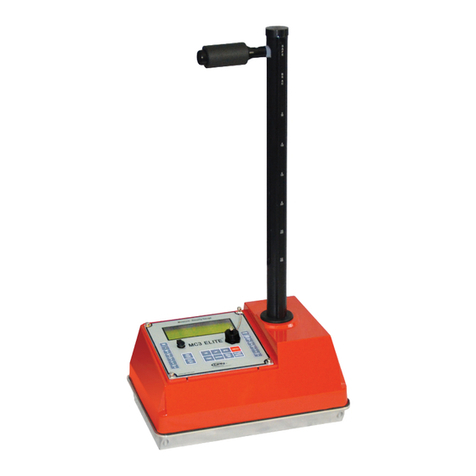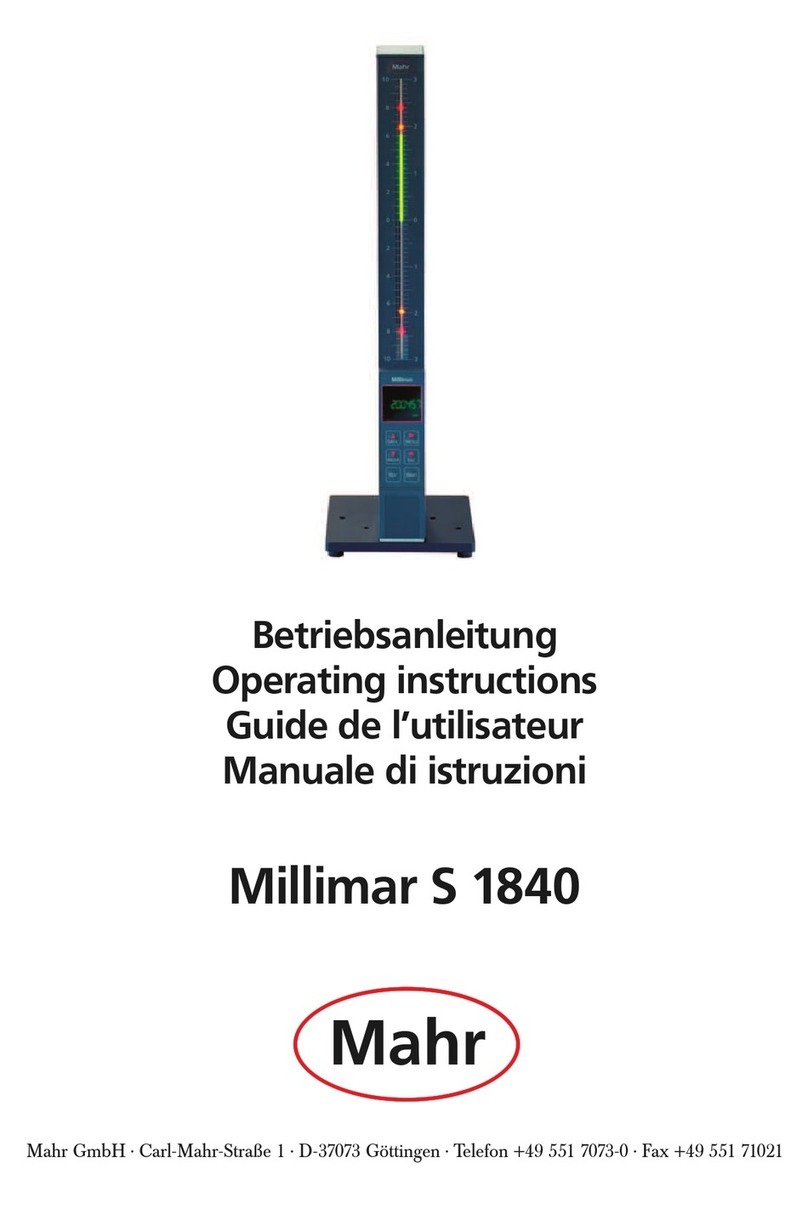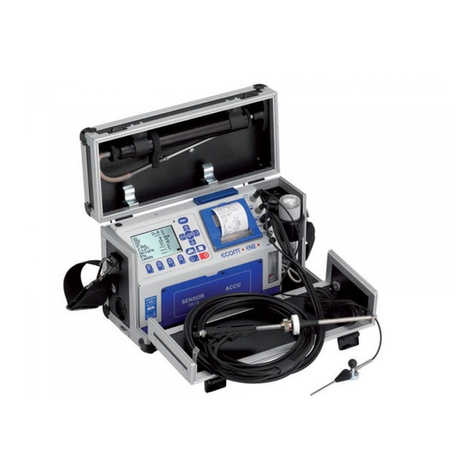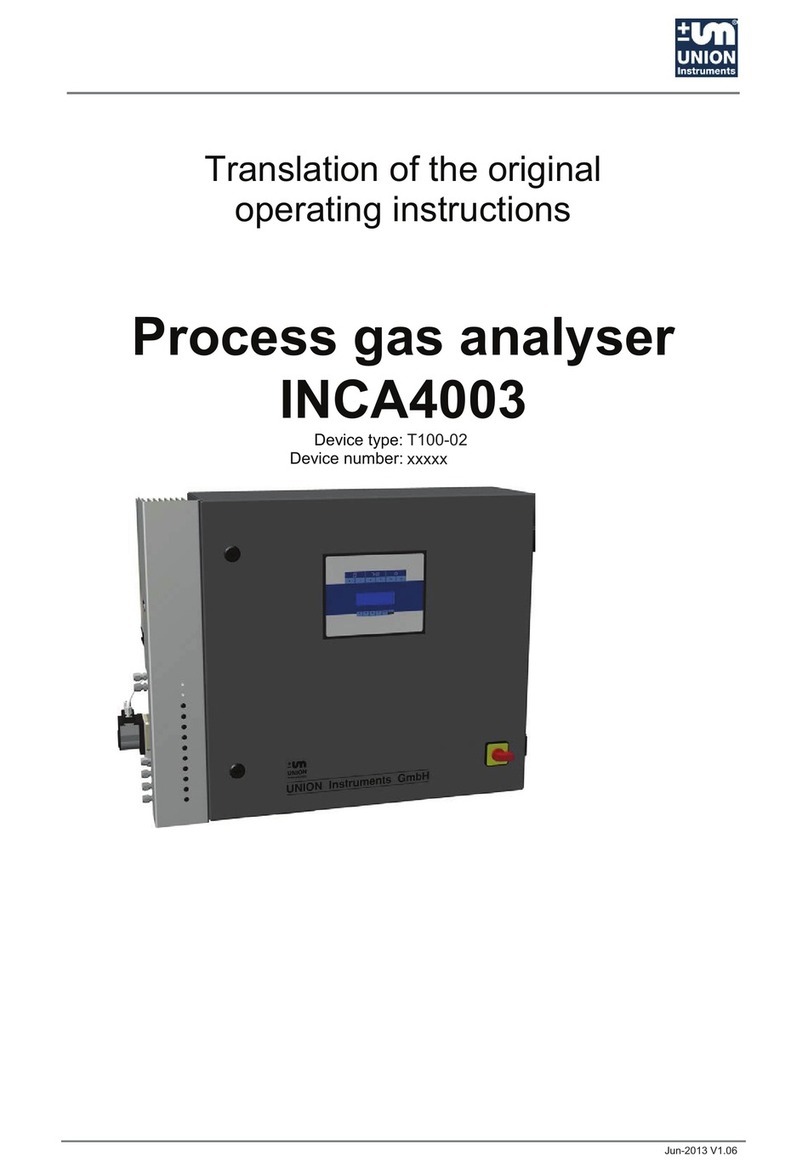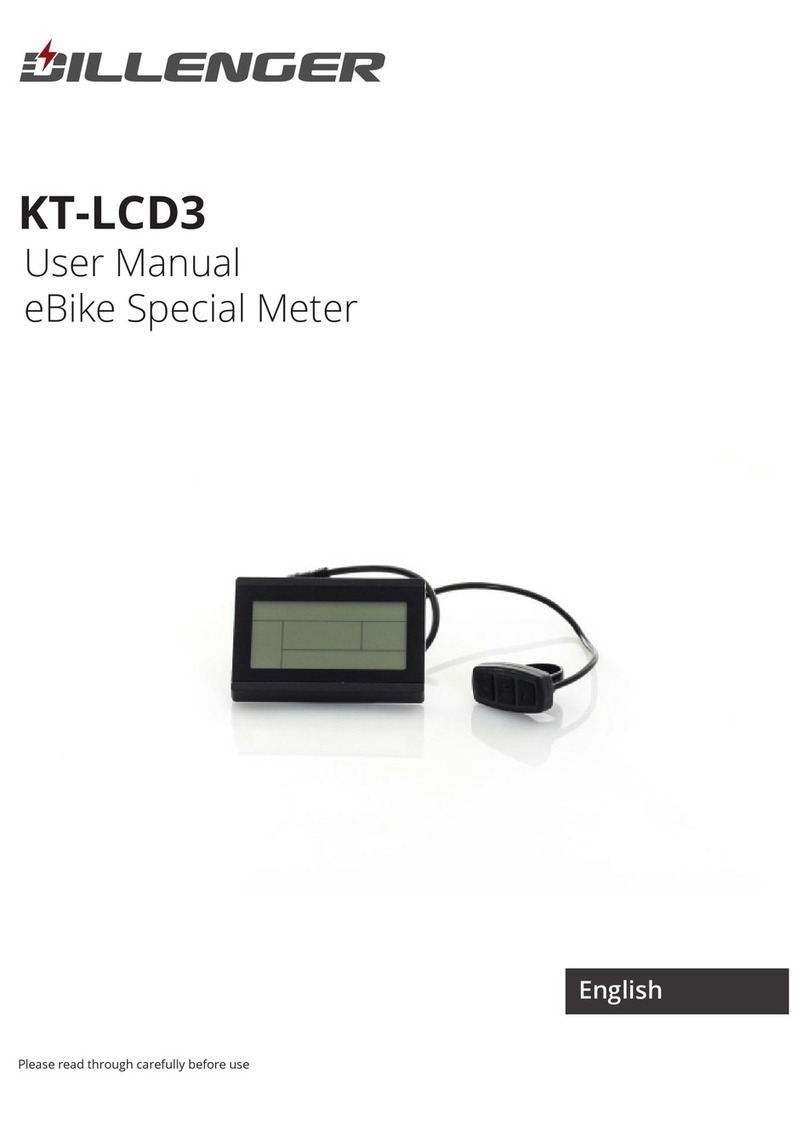Bierer HP72 User manual

Manufacturing & Service: Bierer & Associates Inc.
HP72
HI POT Meter
Operating Instructions

1
Limitation of Warranty and Liability
Bierer & Associates Inc. warrants this product to be free from defects in
workmanship and material, under normal use and service conditions for a
period of one year from date of shipment.
Due to continuous product improvement and development, Bierer &
Associates Inc. reserves the right to modify product designs and
specifications without notice.
It is impossible to eliminate all risks associated with the use of high
voltage electrical devices including this device. Risks of serious injury
or death are inherent in working around energized electrical systems.
Such risks include but are not limited to variations of electrical systems
and equipment, manner of use or applications, weather and
environmental conditions, operator mentality, and other unknown factors
that are beyond the control of Bierer & Associates Inc.
Bierer & Associates Inc. do not express or imply to be an insurer of these
risks, and by purchasing or using this product you AGREE TO
ACCEPT THESE RISKS. IN NO EVENT SHALL Bierer &
Associates Inc. BE LIABLE FOR ANY INCIDENTAL,
CONSEQUENTIAL OR SPECIAL DAMAGES RESULTING FROM
THE USE OR HANDLING OF THIS PRODUCT.
SAFETY MESSAGE DEFINITIONS per ANSI Z535
These instructions contain important safety messages to alert the user
to potentially hazardous situations, how to avoid the hazard, and the
consequences of failure to follow the instruction.
The safety alert symbol identifies a safety message. The
signal word following the symbol indicates:
DANGER A hazardous situation which, if not avoided, will
result in death or serious injury and equipment damage.
WARNING A hazardous situation which, if not avoided, could
result in death or serious injury and equipment damage.
CAUTION A hazardous situation which, if not avoided, could
result in minor or moderate injury and equipment damage.

2
NOTICE Important safety message relating to equipment
damage only. PRODUCT SAFETY INFORMATION
WARNING
1. Meter assembly, interconnect cable assembly, and live line
tool adapters shall be considered non-insulating. Do not let
live line tool fittings come in contact with energized or
grounded conductors. The live line tool adapters, fittings,
and handles shall not be used on any other devices.
2. Use appropriate length live line tools for voltage being worked
and maintain minimum approach distances as outlined in
OSHA 1910.269, Table R-6.
3. All Phasing Meters and Voltage Detectors manufactured
during and after 2007 will have a limit mark engraved on the
high voltage probe(s) 2.5 inches from the tip to indicate to the
user the physical limit that should not be exceeded when
approaching and contacting an electrical conductor or other
electrical test points. Zero Ohm insulated adapters (81280IE)
should be used if limit mark will be exceeded.
4. This equipment should be used only by qualified employees,
trained in and familiar with the safety-related work practices,
safety rules and other safety requirements associated with the
use of this type of equipment.
5. These instructions are not intended as a substitute for adequate
training, nor do they cover all details or situations which could
be encountered when operating this type of equipment.
6. Before operating this equipment, read, understand and follow
all instructions contained in this manual. Keep instructions
with equipment.
INSPECTION & MAINTENANCE BEFORE USE
WARNING
1. Prior to using any high voltage test equipment a careful
inspection should be made to ensure the unit is free from any
contaminants such as dirt, grease, etc. and that there are no
apparent physical damages.
2. High voltage probe assemblies shall be wiped clean prior to
each use with a silicone impregnated cloth and kept clean and

3
free of contaminants. This will prevent tracking on the outside
of the probe and meter error.
3. Always confirm internal battery voltage before and after use.
DESIGN and FUNCTION
The HI POT meter is designed to HI POT cable at 7.2kV phase to
ground. The hi-pot DC diode is built into the meter and the interconnect
cable between the meter and second probe is removable and available in
varying lengths.
There are two selector toggle switches on meter, one on the back and one
on the side of the meter housing. The toggle on the back allows the user
to select between 7.2kV Test. The selector switch located on the side
allows the user to test the meter operation and turn on an LED back light
for low light work conditions.
Note: Meter back-light and test operate off of a 9volt battery located in
the meter housing. The meter will still operate with a dead battery but
the light and test functions will not.
BATTERY REPLACEMENT
The threaded live line tool fitting on the face of the meter probe is
furnished with two flat edges for use with a wrench or slip joint pliers to
remove and install the fitting from the meter housing. To remove, turn
the live line tool fitting in a counterclockwise direction and install in a
clockwise direction.
METER SET-UP and TESTING
WARNING
see “Product Safety Information”, page 3.
see “Inspection & Maintenance”, page 3.
1. Attach the interconnect cable to the meter probe and second
probe.
2. Test the meter by flipping the toggle on the back of the meter
housing to the test position. Then move the small side switch to
the momentary on position to activate the test. The needle should
move smoothly all the way to the far right, at or past the red
indication area.

4
3. Turn on back light by flipping the toggle on the side of meter
housing until the LED comes on.
4. Flip the toggle on the back of the meter to the 7.2kV position.
5. Screw on the bushing adapters to the ends of the meter &
reference probes.
6. Attach the meter probe and second probe to appropriate length
live line tool for the voltage being tested.
URD CABLE DC LEAKAGE TESTER “Hi-Potting”
WARNING –see “Meter Set-Up & Testing”, page 4.
Testing DC Hi Pot Meter on line voltage.
1. Attach Meter & Second probe to appropriate length live line
tools for the voltage being worked.
2. Place second probe on a suitable ground and make contact with
Meter to source voltage.
3. Meter should read 100%
Testing Riser Pole to First Transformer
1. Following standard operating procedures, isolate both ends of
the cable to be tested using a feed thru bushing at transformer,
see NOTE 1.
2. Attach Meter & Second probe to appropriate length live line
tools for the voltage being worked.
3. Attach the hook adapter to Meter probe.
4. Attach straight adapter to Second probe.
5. Place Meter probe on source voltage and second probe on cable
termination. SEE NOTE 2.
6. On a non-faulted cable the meter will momentarily read into the
red and diminish into the green area.
7. On a faulted cable the meter will read into the red area of the
display.
8. A pulsating meter reading indicates the presence of an internal
flashover.
9. Discharge cable to ground after each test by contacting tested
cable with Meter probe and contacting a suitable ground with the
Second probe.
WARNING –Failure to discharge cable could result in
death or serious injury, equipment damage, and/or false readings.

5
Testing Between Transformers
1. Following standard operating procedures, isolate both ends of
the cable under test using feed thru bushings, see NOTE 1.
2. Attach Meter & Second probe to appropriate length live line
tools for the voltage being worked.
3. Attach the Bushing adapters to Meter & Second probes.
4. Insert the Meter probe with adapter into the energized bushing of
transformer and second probe into the open feed thru bushing
isolating cable under test. SEE NOTE 2.
5. On a non-faulted cable the meter will momentarily read into the
red and diminish into the green area.
6. On a faulted cable the meter will read within the red area.
7. A pulsating meter reading indicates the presence of an internal
flashover.
8. Discharge cable to ground after each test by contacting tested
cable with Meter probe and contacting a suitable ground with the
Second probe.
WARNING –Failure to discharge cable could result in
death or serious injury, equipment damage, and/or false readings.
NOTE 1: The section of cable under test must be isolated on both ends
and cannot be connected to/or through equipment or lighting arrestors.
NOTE 2: The maximum reading during the hi-potting test is 100%.
100% represents approximately 70% of the line-to-ground source
voltage, i.e. 7.2kV X .70 = 5kV. This value is representative of a direct
fault on the cable. Readings near zero represent a good cable with little
or no cable leakage.

6
NOTES_______________________________________________
______________________________________________________
______________________________________________________
______________________________________________________
______________________________________________________
______________________________________________________
______________________________________________________
______________________________________________________
______________________________________________________
______________________________________________________
______________________________________________________
______________________________________________________
______________________________________________________
Technical & Service
Bierer & Associates Inc.
Manufacturing & Repair
10730 Farrow Rd.
Blythewood, SC 29016
Tel: (803) 786-4839
Fax:(803)786-5457
www.bierermeters.com
Table of contents
Other Bierer Measuring Instrument manuals


